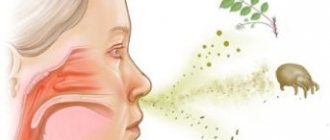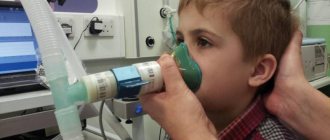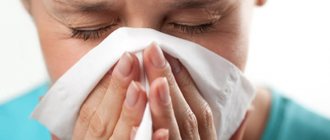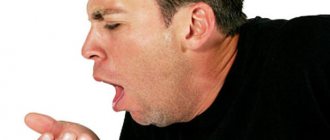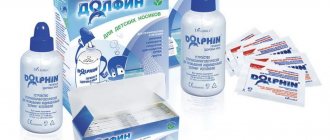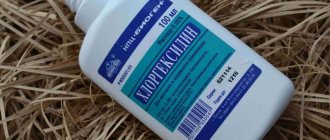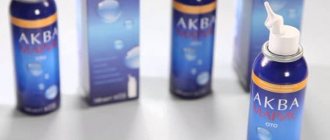As we know from anatomy, the ears, throat and nose are closely interconnected. When one of these organs becomes inflamed, the damage often spreads to the others. For example, a prolonged runny nose can lead to pharyngitis and otitis media. This happens because all these organs are connected by the pharynx. It communicates with the nasal cavity and the Eustachian tubes. Therefore, treatment of one of the ENT organs can affect others. This is especially true for manipulations such as rinsing or douching the nasopharynx. Water that gets into the Eustachian tubes can cause inflammation. As a result, various ear problems develop.
Nasal irrigation is a common treatment used for runny nose and difficulty breathing. For this type of treatment to be beneficial, the manipulation technique must be followed. Otherwise, it will only harm the patient, provoking new problems.
If, when rinsing your nose, water gets into your ear, you need to take action or seek help from an otolaryngologist. Lack of treatment leads to fluid accumulation in the hearing organ and the development of inflammation.
Causes
Before you begin rinsing your nasal passages, you should receive instructions on the technique for performing this manipulation. After all, the procedure has certain complications. Especially if it is given to young children. Often parents are faced with the fact that after rinsing the child’s nose, their ears begin to hurt. However, not everyone knows that this symptom is the result of improper treatment.
The following are the reasons for the penetration of water into the Eustachian tubes:
- A large amount of mucus in the accessory canals.
- Strong pressure of liquid when flushing.
- Swelling of the mucous membrane.
- Incorrect head tilt during manipulation.
In some cases, the technique for performing the procedure is followed, but water still gets into the ear canal. This may be due to the anatomical structure of the skull or a previous injury to the nasal septum. The main causes are considered to be swelling and blockage of the canals with mucus. High pressure when injecting the solution also often leads to fluid reflux into the ear canal. This is often observed when rinsing the nose with a syringe or syringe. When treating children, fluid gets into the ear more often than in adults. After all, kids cannot report a problem. In addition, this is due to the anatomical structure of the ENT organs in childhood.
If fluid gets into the outer ear
What to do if water gets into the outer ear? Many people ask this question. First you need to understand that the fluid is in the outer ear, this is evidenced by the feeling of transfusion, flowing into the cavity. Then you should tilt your head to the side where you can hear the noise, and pull your earlobe down a little, and you can jump a little and shake out the water.
A vacuum pump will also help solve the problem. You need to press your hands firmly to your ears, make a vacuum in the ear canals, then suddenly remove your hands so that a pop is heard.
Divers also know what to do with this problem. You should try to blow air through your ears while covering your nose with your hand.
If your ear starts to hurt, you need to apply a heating pad or something warm to it, this will definitely help. At the same time, the water will warm up and come out faster.
Sometimes the ear may become blocked due to the ingress of hydrogen peroxide or another solution during rinsing. In this case, what to do
Only the doctor can tell. If a sharp or aching pain appears after such a procedure, it can be assumed that the integrity of the tissues in the ear is compromised.
If, when rinsing the nose, liquid gets through the auditory tube into the middle ear, it is important to know what to do to avoid complications. Complications are indicated by the appearance of pain, the feeling that there is a lot of water in the ear, and it is overflowing and gurgling. If the procedure is performed correctly, the liquid comes out quickly and naturally. If an error occurs somewhere, this can cause the following complications:
- eustitis – inflammation of the auditory tube. Main symptoms: sensation of transfusion, decreased hearing, tinnitus;
- Otitis media is an infectious disease, inflammation of the middle ear. Accompanied by the following symptoms: temporary hearing loss, temperature;
- myringitis is an inflammatory process on the eardrum. This can be caused by microorganisms entering the middle ear;
- Epitympanitis is a disease accompanied by inflammation of the middle ear. When this disease occurs frequently, the auditory ossicles are destroyed. As a result, hearing problems arise.
The risk of complications increases if you wash your nose with saline solution; it can irritate the walls of the ear canal. Also, do not forget that the liquid does not enter the ear canal in its pure form, but with admixtures of mucus and dirt. This can become a serious problem, because all this can only be removed through the ear tube.
In order to avoid complications, you need to quickly drip the ear with any drops for ear inflammation. And seek help from a doctor.
The fluid can only be removed by puncturing the eardrum. Doctors use this procedure only in extreme cases, when all kinds of manipulations and conservative treatment methods are not effective. Since during the piercing procedure, there is a huge risk. It is used only if an inflammatory process associated with the accumulation of a large amount of fluid in the ear has begun to develop. After making an incision in the membrane, a special tube is inserted into the wound, which will leave the hole open for some time, so that the fluid and pus will completely come out. If the procedure is performed correctly, the risk of complications is minimized.
Symptoms
Liquid penetration can be judged by the symptoms that occur during or immediately after rinsing. The patient complains that his ears suddenly hurt and a feeling of stuffiness appeared. In most cases, water penetrates into the middle and outer parts of the hearing organ. In this case, the patient feels that there is fluid in the ear cavity. If after rinsing the nose there is a feeling of transfusion, flow of water and congestion, then most likely there are problems with the outer part of the hearing organ. You can empty the cavity of liquid yourself. However, if some antiseptic solutions penetrate, it is recommended to seek help.
When water gets into the middle ear, symptoms such as pain, congestion, and hearing loss are observed. Fluid in the ear canal distorts incoming sound waves, which may result in noise. Congestion and hearing loss occur when large amounts of water penetrate. Compression of the nerve endings in the middle ear leads to the development of pain. Their severity depends on the amount of liquid ingested and on the patient’s individual characteristics of perception. Sometimes the pain radiates to the temples and forehead. This symptom may also be associated with inflammation developing in the ear cavity.
Correct position when rinsing the nose
Why does liquid get into the ears when rinsing the nose?
Since the nasopharynx area and the middle part of the ear are connected by a special channel, the risk of liquid getting into the ears is quite high, especially if certain safety rules are not followed. If water enters the Eustachian tube, it often flows into part of the ear. For the most part, the occurrence of this situation is associated with the following reasons:
- Strong pressure. If during rinsing there is strong pressure on the medicine package, the stream very often affects the ear canal and ear.
- Deviation of the nasal septum. This pathology also often causes the solution to get into the ear.
- Rinsing for congestion.
- Incorrect administration of the medication into the nasal passage.
If such a situation occurs, the patient immediately feels pain in the ears, which can radiate to the temples and forehead, severe congestion, hearing loss, the presence of constant sounds, gurgling.
In order to avoid such manifestations when rinsing the nose with Dolphin and other solutions, the procedure is best carried out with the help of a specialist.
Consequences
Complications occur in patients who do not take measures to remove water from their ears. Prolonged presence of fluid in the cavity often provokes inflammatory reactions. The risk of complications is higher among children. If your ears become blocked after rinsing your nose, you should remove the water as quickly as possible. Most often, consequences occur when solutions penetrate into the middle part of the hearing organ. These include:
- Eustachite.
- Myringitis.
- Otitis media.
- Epitympanitis.
All of these diseases can lead to hearing impairment or loss. The most common of these is otitis media. It is accompanied by pain in the ear, as well as fever and general weakness. In acute inflammation, there is a shooting sensation that cannot be tolerated. Pathology is often observed in children, due to anatomical features. If the cause of the deterioration is unknown, parents should indicate that they washed the child's nose shortly before the pain began. Water getting into the ears often causes bacteria to enter the ear cavity. As a result, pus may be released. If any symptoms of inflammation appear, you should consult an ENT doctor.
How to avoid mistakes
If, nevertheless, the doctor allows you to do rinsing at home, then you need to learn about all the intricacies of the procedure. It is better that the first time your doctor shows you how to rinse your nose correctly so that you do not experience ear pain. As a rule, you are allowed to do the rinsing yourself using a bulb or a nasal mug. If you need to prepare the solution yourself, then also get recommendations from your doctor about some features:
- composition of the solution;
- concentrations;
- percentage of components;
- frequency of the procedure;
- the amount of liquid infused;
- solution temperature, etc.
Rinsing should be done with the patient leaning forward. Do the procedure slowly and carefully. If the solution enters the mouth through the nasopharynx during manipulation, this is a common occurrence. Infusions should be made into both nostrils alternately. Do not blow your nose or make sudden movements. After the procedure, do not go outside for at least 2 hours.
Today, a network of clinics has been developed, staffed by professional ENT doctors who will correctly carry out any procedure. Contact them even for a seemingly simple manipulation - rinsing your nose. Visit your doctor for consultation at least once, and he will tell you in detail about the correct procedure, show you and answer all your questions. There is no need to aggravate the situation and add ear pain to your illnesses just because you do not know how to rinse your nose correctly.
The problem of ear congestion after rinsing the nose often occurs in people of school and preschool age.
As a rule, this problem is accompanied by discomfort in the nasolabial triangle. Ignoring
water
getting into the ear after rinsing the nose
can lead to problems with the body.
Consequences of water getting into the ear
Ignoring contact with a doctor can
cause the following consequences
water
gets into the ear after rinsing the nose
- external and otitis media
- formation of ear hematomas
- development of parasitic, bacteriological and mycological infections
- allergic reaction
In order to minimize or completely prevent the development of consequences, it is necessary to properly rinse the nose.1.
When instilling vasodilating drops into the nose, you need to keep your head in its original position for about 5 minutes. 2. Take an empty bottle of used medicine, squeeze it, and apply it to your nostril. Close the other nostril with your finger and open the bottle. This procedure will remove excess fluid that has collected in the nasal passage and gets into the ear. In addition to the empty bottle, you can use a special bulb. 3. The duration of nasal rinsing should not exceed 5 days. 4. If the problem does not go away, contact an otologist for an appointment and tell us about your problem. This will help avoid such an unpleasant and difficult-to-treat disease as otitis media.
Efficiency
The appearance of water in the ear after rinsing the nose
can be eliminated by properly rinsing the nostrils. If discomfort haunts you, only a qualified specialist can help. Possession of knowledge and modern treatment methods can speed up the patient’s recovery process.
Often, for certain diseases of the nose, in particular some forms of rhinitis, rinsing with various drugs is used. And sometimes it happens that the liquid used gets into the ears. This is a rather unpleasant sensation that causes discomfort, sometimes pain and some symptoms that require immediate elimination.
Preventing the problem
To prevent water from flowing into the ear canals, you need to properly rinse the nasal cavity. It is important to observe the tilt of the head and the amount of pressure on the syringe or syringe plunger. To get rid of nasal congestion and swelling, you need to instill vasoconstrictor drugs 5 minutes before the procedure. This will help prevent canal obstruction. In this case, water will enter the opposite nasal passage, and not into the Eustachian tubes. Before washing, you should make sure that there are no contraindications to this procedure. This manipulation cannot be performed if there are tumors in the nasal cavity, or if there is a deviated septum.
What to do if your nose and ears are stuffy
When rinsing, press the bottle with the solution slowly. Normally, with each push, 2 drops should enter the nasal cavity. Particular care should be taken when handling syringes and syringes, as the liquid pressure in them is difficult to control. It is better to wash young children using a pipette. It is important to take the correct body position. The torso should be tilted over the bathtub at an angle of 90 degrees. This prevents improper fluid flow. The head should be tilted to the side and slightly forward. If the manipulation is carried out correctly, the entire solution should come out of the opposite nostril along with the accumulated mucus.
Help
What to do if your ear hurts depends on which part the water got into. You can remove fluid from the external auditory canal yourself. To do this, jump or shake your head. Vibrating massage will also help. To do this, you should bring your palms to the auricle and press firmly. This creates a vacuum. In order for the water to come out, you should sharply remove your palm. Clearing the outer ear of fluid is possible by performing chewing movements. Another way is to blow water through your nose. If the liquid is close, you can blot it with a cotton swab. However, deep insertion of any objects will worsen the condition and lead to complications.
If water gets into the middle ear, it is recommended to see a specialist.
Penetration of moisture into the tympanic cavity can lead to various complications. In some cases, it is not possible to see a doctor immediately. What to do if such a situation arises: first of all, you should start making chewing movements. This can help move moisture through the Eustachian tubes into the nasopharynx. In case of severe pain, warm compresses are applied to the blocked ear.
Chewing motions help expel moisture from the outer and middle ear
What to do if Dolphin gets into your ear
If liquid gets into your ears, you should not panic, but try to get rid of it as quickly as possible. In many cases, the solution comes out on its own through the ear canal and does not cause much trouble. However, if after a few minutes this does not happen, you need to carry out a few simple manipulations:
- Tilt your head and jump until the liquid is completely eliminated. If the fluid comes out, the congestion should immediately go away and your hearing should improve. After this, you need to carefully wipe the ear canal with a cotton swab.
- When this technique is not effective, you can do the following: make several swallowing movements, take a deep breath, hold your breath and repeat the swallowing exercises again; this procedure can again get liquid into the nose.
- If Dolphin's solution gets into your ears and causes severe congestion, you can also use chewing gum, which you need to actively chew for several minutes in a row.
- Another method that can help is the “divers method”. To do this, you need to cover your mouth well with your palms and try to blow air through your ears, so the liquid should come out on its own.
If you experience pain, you can try to warm your ear. To do this, heat the salt, put it in a clean napkin and apply it to the sore ear, you can also use a warm heating pad. If the solution gets deep, you can resort to anti-inflammatory ear drops. Then moisten a cotton swab in boric alcohol and insert it into the ear, you can make a warm compress. For severe pain, it is recommended to take a painkiller tablet.
If all the manipulations performed do not bring the desired result, and you feel that the solution is in the ear, you need to urgently seek medical help so as not to harm your health.
Drug treatment
If water does not come out of the ear cavity, despite the measures taken, you should contact an otolaryngologist. In some cases, instilling vasoconstrictor drugs into the nose helps. It is also recommended to take an antihistamine, which will help eliminate swelling of the Eustachian tube. If the ears hurt very much after rinsing the nose, painkillers and anti-inflammatory medications are prescribed. These include Niotit and Otipax drops. Boric alcohol, as well as applying a boiled egg wrapped in cloth until it cools, helps reduce the intensity of pain during otitis media.
If a large amount of moisture has accumulated in the ear cavity, the otolaryngologist can remove it with a special aspirator. The last resort is to puncture the eardrum. This intervention is performed when cleaning the cavity from water by other methods is ineffective. A drainage tube inserted into the eardrum helps remove inflammatory exudate and accumulated moisture.
If an ear problem is detected in time, it can be solved in a short time and does not have dangerous consequences. When preparing to rinse the nasal passages, it should be taken into account that water may enter the hearing organ. Following a proper rinsing technique will help prevent this.
